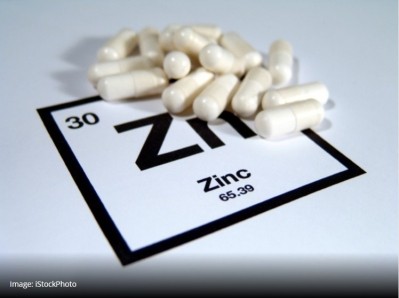Micronutrient blend said to improve vision by reducing eye ‘floaters,’ says study

Ireland and Germany-based researchers found the supplement blend of L-lysine, vitamin C, Vitis vinifera, zinc and Citrus aurantium decreased visual discomfort caused from these floaters.
At six months, these improvements were confirmed by the decrease in vitreous opacity areas in the active group as the team considered the dietary intervention as, “support for patients with symptomatic vitreous degeneration.”
“This study is very interesting, as it is the first of its kind to examine the benefits of nutritional supplementation for patients suffering with vitreous floaters,” according to Professor John Nolan, the Director of the Nutrition Research Centre Ireland (NRCI, Waterford Institute of Technology) and Principal Investigator of the Floater Intervention Study (FLIES) trial.
“Notably, a large percentage of patients (77%) on the active supplement demonstrated a reduction in vitreous floaters and associated improvements in vision-related quality of life was seen in 67% of patients."
The FLIES trial
The FLIES trial is a double-blind, placebo-controlled clinical trial that enrolled and randomised 61 patients, who suffered from primary floaters, to either the active group (n = 31) or the placebo group (n = 30).
The active group received a capsule containing 125 milligrams (mg) l-lysine, 40mg vitamin C, 26.3mg Vitis vinifera extract, 5mg zinc, and 100mg Citrus aurantium (commercially available as VitroCap N).
Meanwhile, the placebo group received a placebo capsule containing microcrystalline cellulose. The active and placebo capsules were identical in shape, colour, and packaging.
Supplementation was via the oral route and the study patients were instructed to take one capsule per day with a meal for six months.
The study staff and patients remained masked to the group allocations throughout the study. The randomisation sequence for the FLIES study was revealed after completion of the study and masked review of the database.
After supplementation, the active group reported a significant decrease in their visual discomfort from floaters, whereas the placebo group had no significant change in their visual discomfort.
Results
At six months, there was a significant decrease in vitreous opacity areas in the active group and an insignificant increase in vitreous opacity areas in the placebo group.
Also, there was a significant improvement in photopic functional contrast sensitivity with positive contrast polarity in the active group after supplementation.
“So, while not all participants on the active arm of the trial experienced improvements, this work provides clear evidence that this nutritional intervention is effective for certain patients,” Professor Nolan adds. “We look forward to continuing our studies on this important area of research.”
“While we are hopeful that this research will inform eye-care, and offer an option to eye-care professionals and patients to enhance the health of the vitreous, we strongly advise that patients seek advice from a qualified eye-care professional,” he concludes.
‘Black or grey specks’
According to the National Eye Institute, “almost everyone develops floaters as they get older,” but floaters can also occur from a very young age and especially in short-sighted people.
They are described as spots in the vision like black or grey specks, strings, or cobwebs that drift about when you move your eyes.
Most eye floaters are caused by age-related changes in the vitreous (the jelly part of the eye). Floaters are mostly harmless but can cause significant visual discomfort.
In some cases, floaters may be associated with retinal tears, a potential sight-threatening complication that requires immediate medical attention.
In terms of a low risk yet effective therapy for floaters, a plausible idea has been put forward that relates to micronutrient intervention that can retard the mechanisms underpinning vitreous degeneration.
This rationale derives from in vitro experimental evidence indicating the potency of exogenous micronutrients such as hesperidin, verbacosides, leucocyanidins, and l-lysine against vitreous degeneration mechanisms.















